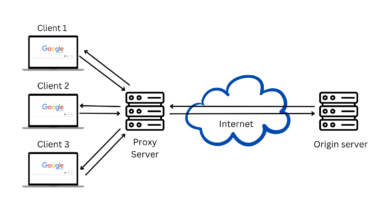
Capturing and Extracting Data Through SAP Data Services
One of the most optimized software applications for integrating and transforming data is SAP Data Services. This platform is ideal for developing and executing workflows for the extraction of SAP data from various sources. These include data stores, web services, applications, and databases. Once extracted, this data can be processed, integrated, and transformed for real-time business analytics and taking critical operational decisions.
And that is not all. Apart from the conventional data transformations like filters, calculations, joins, and aggregations, SAP data has other varied functionalities. These include geocoding, text analysis, auditing, data profiling, and addressing standardization. Change Data Capture (CDC) is also supported by SAP data and helps in data input for stream-processing data warehouses and systems.
Table of Contents
The Use of the SAP Extractor
The SAP Extractor, previously known as the “BW Extractor”, is typically used to extract SAP data. The Extractor is a data management feature of SAP that extracts data from source systems and later stores it in business intelligence systems or downstream data warehouses. SAP launched the Extractor primarily to extract SAP data to input into the SAP BW application.
In case an SAP customer is not using the Business Warehouse of SAP, the Extractor can still be used for integrating data. SAP data is widely used for services that permit applications to query Data Services. This results in fast response to batch processing (previously known as data transformation) based on a pre-defined workflow.
Being a program in SAP ERP, the Extractor can be triggered to extract SAP data for transfer to BW and can either be a standard DataSource or a customized DataSource that provides details of full load delta processes of various types. The data transfer part of the program is controlled remotely by the SAP BW. The SAP Extractor also plays a significant role in populating the delta queue with delta type new and changed records and this data can be transferred to SAP BW via a simple data transfer remote call.
To extract SAP data and transfer it to the input layer of SAP Business Warehouse, also called the Persistent Staging Area (PSA), it is necessary to define the load process with an InfoPackage in the scheduler. The data load process is triggered by a request IDoc to the source system when the InfoPackage is to be implemented with process chains used for executions.
The Working of the SAP Extractor
Extractors to extract SAP data are applications specific and the BI Content of the Business Warehouse is delivered after the extractors are hard-coded for the Data Source. It is necessary though that the Extractors used complement the precise architecture of the Data Source. Moreover, users can also use different types of Extractors to extract SAP data and move it to BW. SAP Extractors are fully automated and can identify which data needs to be extracted and the tables where data is in read-only form after the generic extractor names the Data Source.
Regardless of the application, a user can extract SAP data with an Extractor consisting of related database views, master data attributes or texts, SAP query functional areas, or transaction data from all transparent tables. The Data Source can generically read and transfer data to the BW for all these data types. What has made the SAP Extractor stand out among others in this niche over the years is the several cutting-edge features that it offers as an Enterprise Resource Planning product. Oracle, Microsoft, Salesforce, and other competitors have not even managed to come close to the ERP system feature for feature.
How to Extract SAP Data
Primarily, there are three ways to extract SAP data with SAP BW Extractor
- Content Extractors: These are application specific and used to extract BW content, FI, HR, CO, SAP CRM, and LO cockpit.
- Customer-Generated Extractors: These too are application specific and used for LIS, FI-SL, and CO-PA.
- Generic Extractors: These have wide-ranging cross-application uses that function on the DB View, Infoset, and Function Modules.
The ETL Tool of SAP
At this stage after going through the various functionalities of the SAP Extractor, it is critical to know about another way to extract SAP data and that is by using the SAP ETL tool. ETL is short for Extract, Transform, and Load and is an excellent and effective tool to extract SAP data. After data extraction, the tool transforms the data to a format that matches the intended target, and finally loads the processed data into a central storage repository or a data warehouse.
An advantage of this tool for extracting SAP data is that it can do so for data in any form, whether it is in an unstructured, semi-structured, or structured format. The SAP ETL tool runs checks to clean the data and confirm if the value of a name has been defined and can also be used to move data inside the SAP ecosystem. Even from outside the application, the tool can extract SAP data and transform it to match the structure of the intended target.
There are several other benefits of the SAP ETL tool besides the basic function of extracting, transforming, and loading SAP data. Since the tool can be connected to CDS views and SAP Data Extractors, SAP data extraction and extracting incremental and change data or deltas through the OData Services is fully automated. Additionally, data migration from SAP or non-SAP sources to target the HANA database through the SAP Data Services can be carried out with the SAP ETL tool. Hence, organizations can run data analytics in the application layer only. Summing up, the SAP Extractor meets the unique needs of the SAP Business Warehouse.








